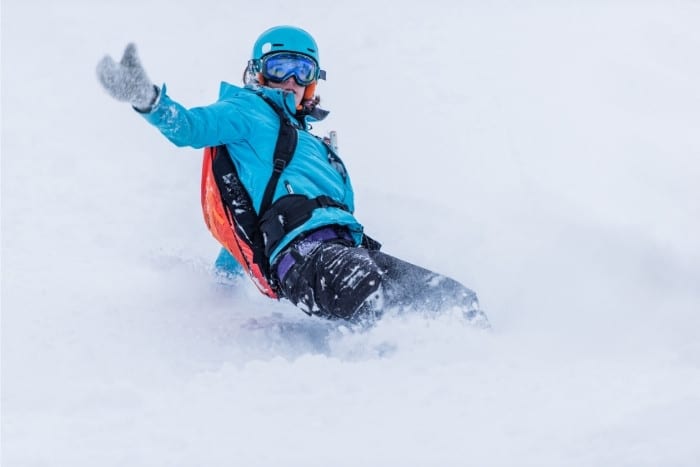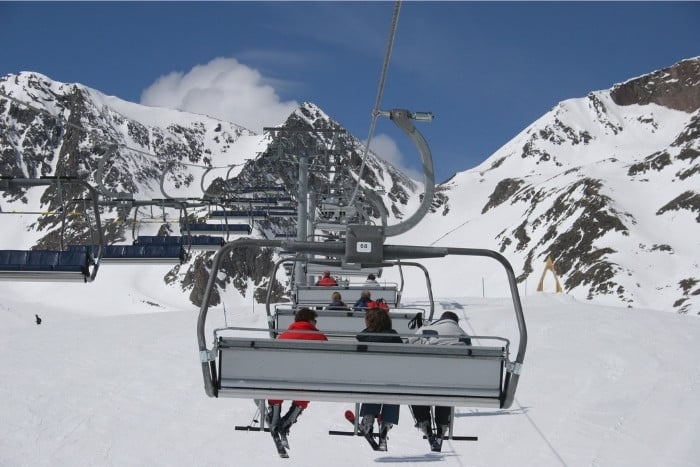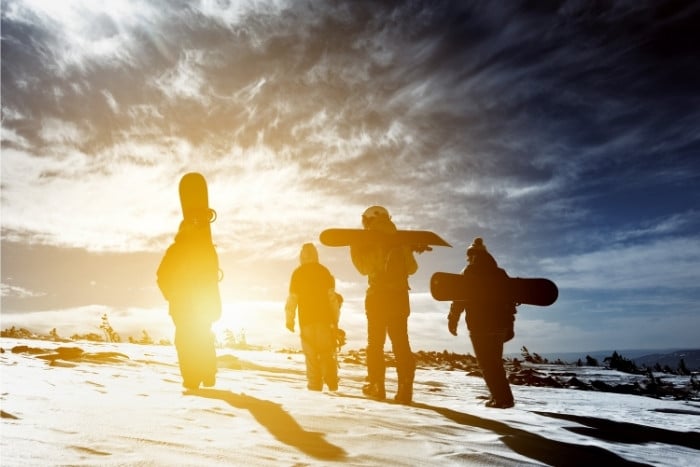Let’s face it, snowboarding can be painful. So often, people are afraid to try snowboarding because they’re worried about getting hurt or being in pain. I wish I could tell you it won’t ever hurt, but what good is the reward without some risk?
There are many types of hurt that could be involved in snowboarding. A few of these include making an impact with the snow, making an impact with others, general muscle pains from snowboarding, a hurt ego, and the hurt you may experience when it’s time to leave the ski hill.
Whether you’re new to the sport or an experienced rider and want to know what to expect as far as pain goes, you’ve come to the right place. I’ll cover many types of hurt you might face while snowboarding so you can be as prepared as possible before cruising down the hill.
What Kinds of Pain May Come from Snowboarding?
You could face a wide variety of pains when snowboarding, and different riders will encounter different types of pain because everyone’s body is different.
Below is an extensive list of the types of pain you may face when spending a day on the slopes.
1. Impact with Snow
This is the most common type of pain snowboarders face while on the snow, and it might even be the most feared by new riders.
Falling and hitting that cold snow-pack is painful, and here’s a bunch of ways it could happen.

Catching An Edge
Catching an edge is an unfortunate and inevitable part of learning how to snowboard, and occasionally even for seasoned riders.
Catching an edge can result in a face-plant or landing on your rear end, and neither feel that great.
Hurting Your Wrists From Falling On Your Hands
Although broken wrists aren’t that common, they often happen from falling on outstretched hands. A good saying to remember when learning how to snowboard is ‘fists save wrists.’
Avoid falling on your palms and instead make a fist before falling on your hands.
Trying a New Trick
If you like to ride the terrain park, you will know this very well and you will probably fall more times than you can count. The pain can be even worse if you are trying tricks on big jumps.
Losing Control of Speed
When learning how to snowboard, sometimes people struggle with controlling their speed and learning how to stop. And this can result in some pretty gnarly falls and pain.
If you lose control and are flying down the hill without brakes, it’s best to sit down to avoid making contact with anyone or anything.
Getting Off the Chair
For snowboarders, getting off the lift can be particularly challenging, especially when there are a lot of people getting off and there is little room.
This can result in people falling on the hard-packed snow on the top of this lift, often causing bruising to the knees. Don’t worry if you fall while getting off the lift. We’ve all been there.
Changing Terrain
If the snow terrain changes suddenly or you don’t know how to ride that type of terrain, it can cause you to lose control and fall. An example of this is moguls.
Moguls and snowboards are a challenging combination, and few snowboarders master them.
2. Impact With Anything That is Not Snow
Impact with non-snow things can be more painful and dangerous. Use extreme caution when riding on the hill, and always be aware of your surroundings.
Here is a list of a few non-snow things that can cause pain from impact.
Other Skiers/Riders
Impact with other skiers or riders can cause serious injuries. Look out for other skiers and riders on the hill to ensure everyone has a rad day out on the mountain!
Trees
Also dangerous and also not fun. Unlike snow or people, trees will not budge when you hit them; therefore, it will be very painful for you if you hit one.
Chairlift Poles
If you’ve been to a ski hill, you’ve probably seen those big pads wrapped around the poles holding up the chairlifts.
Those are meant to cushion the blow if you hit them, but they will still hurt if you hit them at high impact.
Chair Lift Itself
This can be an extra factor for snowboarders since getting off the chair lift doesn’t always go right.
If you fall while getting off the chair lift, the chair behind you may come around and make contact with your head. However, at most resorts, lift operators assist you if you fall.

Terrain Park
If you like to ride the terrain park, you’ll most likely encounter impacts with some of the park features such as rails and boxes.
These features are metal and can be very painful when your body makes contact with them.
3. Non-impact Related Pain
When you’re not running into something or falling onto the snow, you can still experience pain when snowboarding.
Here is a list of things that might cause you some discomfort when snowboarding, even if you don’t come into contact with anything.
Foot and Ankle Pain
The main culprit of foot pain is your boots. You might find that you’re in pain because you don’t have a proper fitting boot. Snowboarding is also quite bumpy, even if you’re riding the groomers.
Your ankles can start to hurt from absorbing the shock, and from being locked into your boots all day.
Calf Pain
This could be caused by a variety of things, such as the setup of your bindings, the terrain you’re riding in, or just being new to the sport and not having developed sufficient muscle mass for snowboarding.
Thigh Pain
If you like to ride deep powder days, you’ll probably find that your thighs and legs will be burning on the first run.
If it’s your first day or first few days on a snowboard, your thighs might start to hurt from using them so heavily in learning.
Knee Pain
While snowboarding might not be as knee intensive as skiing is, your knees might start to hurt if you’re going over particularly bumpy terrain.
Neck Pain
The position of your body while snowboarding is not natural, which is part of why it can be challenging to learn.
Since your body is facing sideways, you might find that your neck hurts at the end of the day from being turned all day.
Neck pain is also common for beginners as the neck takes a lot of strain when constantly picking yourself off the snow from falling.
Headache
Getting a headache at the ski resort isn’t common, but it is something to look out for. Those who don’t live at a high elevation may experience altitude sickness at the high altitude of the ski resort.
One symptom of altitude sickness is a headache, so be aware if you start to get a headache when going into the higher elevations.
Hurt Ego
This happens to all of us, and it is, unfortunately, unavoidable. Especially when you ride directly under the chair lift, if you take a spill or mess up your trick, you might experience a hurt ego.
Leaving the Snow
If you had a stellar time snowboarding or being in the snow, you might feel a little pain when it’s time to leave. Even though it might be a bummer to leave, this will only fuel your stoke for the sport!

Final Thoughts
There are many ways you could experience being hurt while snowboarding, and it’s great to be aware of these risks before going out on the hill.
If, after reading this article, you’re terrified to go snowboarding, I want to assure you that snowboarding is so fun and rewarding that many riders know and accept the risk for the great reward that comes with it!
